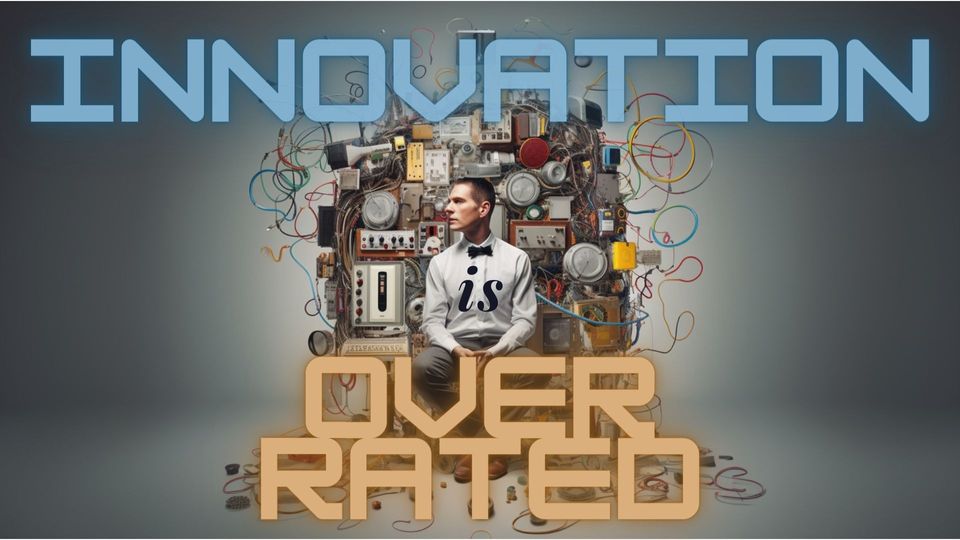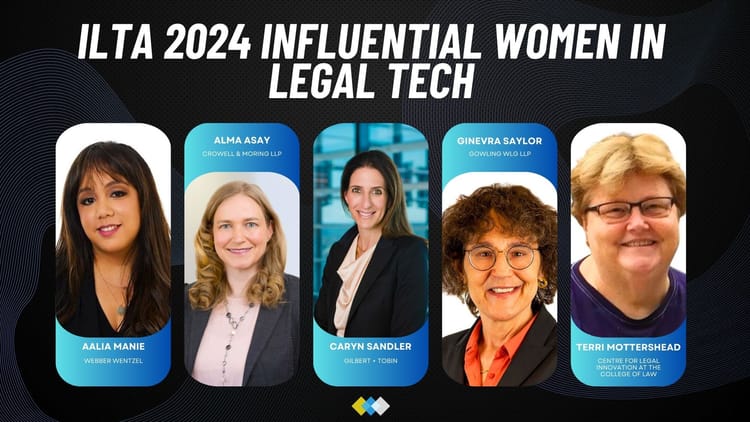Innovation is overrated

I've been going deep into the world of generative AI - both learning and building. I've spoken with firms, business leaders, and creators on how they are thinking about leveraging large language models (LLMs).
On the latter, I've built a number of applications and projects powered by LLMs, including chatbots trained on specific datasets, a game, and utility projects like LawTechDaily.com (which is written and read by AI).

What I've learned is that generative AI is a tidal wave, just not in the way that one might imagine it to be. I am not an expert (not even close), but I'll share lessons and frameworks I've developed from experimentation which might be helpful to others in the coming weeks.
Innovation is overrated
Innovation is often hailed as the holy grail of business success, the key to staying ahead of the competition and securing long-term survival. However, it's important to remember that innovation, for innovation's sake, doesn't usually make sense.
I was reminded of this as I read a piece with the same title by Jason Fried - this point particularly resonated with me:
Even the most innovative projects or products are full of rote, prosaic stuff that still needs building. The poetic magic may be in the 5%, but the bulk of the work is in the other 95.

So as I think about what innovation is, three thoughts emerge:
1) Innovation is not always about creating something entirely new. Sometimes, it's about improving existing products, services, or processes. It's about making things better, not just making new things. This is often overlooked in the rush to be the next big thing. Innovation is not the only path to success.
There are many companies that have achieved great success not by being the most innovative but by being the most reliable, the most efficient, or the best at what they do. Here are two examples:
Costco: a great example of success through efficiency rather than product innovation. Costco achieved its goals of providing lower prices and high quality by taking the counterintuitive approach - reducing how many unique products they carry, but selling these in bulk quantities. This allows them to negotiate better prices with suppliers and pass the savings on to their customers. Their business model is not based on offering the newest or the most diverse range of products but going deep on just a few categories.
Southwest Airlines: Another example of a business that has achieved success not through groundbreaking innovation, but by focusing on efficiency and reliability. Southwest Airlines didn't invent a new type of aircraft or revolutionize the concept of air travel. Instead, they "innovated" within their operational processes, implementing a point-to-point system instead of the traditional hub-and-spoke model used by most airlines. This, along with their focus on quick turnaround times and excellent customer service, allowed them to consistently deliver reliable and cost-effective service, leading to their success.
2) Innovation should not be pursued blindly. It must be aligned with the company's overall strategy and goals. A new product, service, or process should not just be novel; it should add value to the customer and the business. It should solve a problem, meet a need, or create an opportunity.
3) Work is still required. Driving results (call it innovation or not) is far from a passive process. It requires a significant amount of work, dedication, and a willingness to take risks. It's about the relentless pursuit of turning an idea into a reality. Once an opportunity has been identified, the real work begins. Developing a new product, service, or process requires planning, testing, and refining. It requires collaboration and coordination across different teams and departments. It requires managing resources, timelines, and expectations. Maybe that is true innovation.
Something I shared back in 2021: too often, people spend a disproportionate amount of time to figure out the "silver bullet." As Ben Horowitz wrote in The Hard Things About Hard Things:
There are no silver bullets, only many lead bullets
In most instances, there is no one thing that you'll do that will give profound results. Instead, trying many things will compound the likelihood of success over time.
Put another way, focus on increasing the number of shots on goal 🎯, instead of trying to control the odds of getting that one perfect shot.
What's coming up from Fringe Legal
- ⚙️ Conversation with India Preston on tactical approaches to challenging the status quo.
- 🎮 Driving Digital Adoption in Law Firms: Lessons from Complex Games.
- 🌱 Conversation with Kai Gray, CEO and Co-founder of Motive on ESG - what is it, why does it matter, and how to have an impact .
- 📺 (Webinar - Register here): ChatGPT Prompt Engineering for Legal
- 👍🏽 Chat with Feargus MacDaeid and Nnamdi Emelifeonwu co-founders of Definely, on building products that solve customer problems.
Carve outs
(random tidbits for curious minds)
- 🫂 Mergers Pick Up in Q2: law firm mergers are up year-to-date in 2023 compared to 2022. As more firms explore larger and more complicated combinations, the typical timeframe for completing a combination is lengthening, and the likelihood of hitting a roadblock in these types of combinations is greater
- 🤑 Let the Urgency of Your Customers’ Needs Guide Your Sales Strategy: when companies are creating profiles of possible target customers, there is a dimension they often overlook: the urgency of the need for the offering.
- 🏗️ From Knowledge Management to Intelligence Engineering - A practical approach to building AI inside the law-firm using open-source Large Language Models (PDF): outlines the AI build vs. buy options, introducing 4 postures across the spectrum of building AI. The Creator Customiser posture allows the customization of open-source models with internal data.






Become a Fringe Legal member
Sign in or become a Fringe Legal member to read and leave comments.
Just enter your email below to get a log in link.